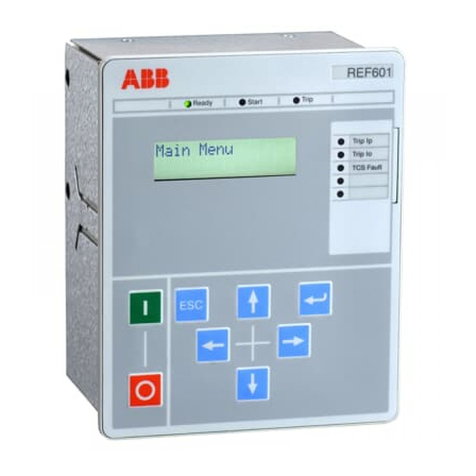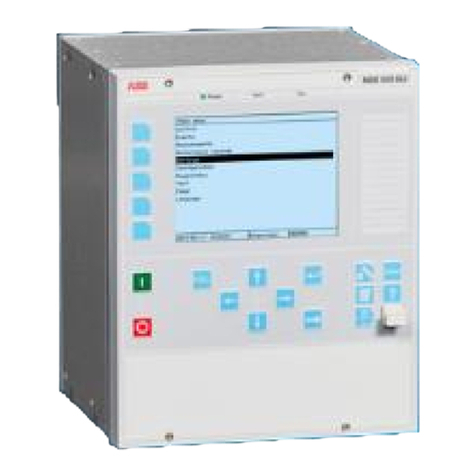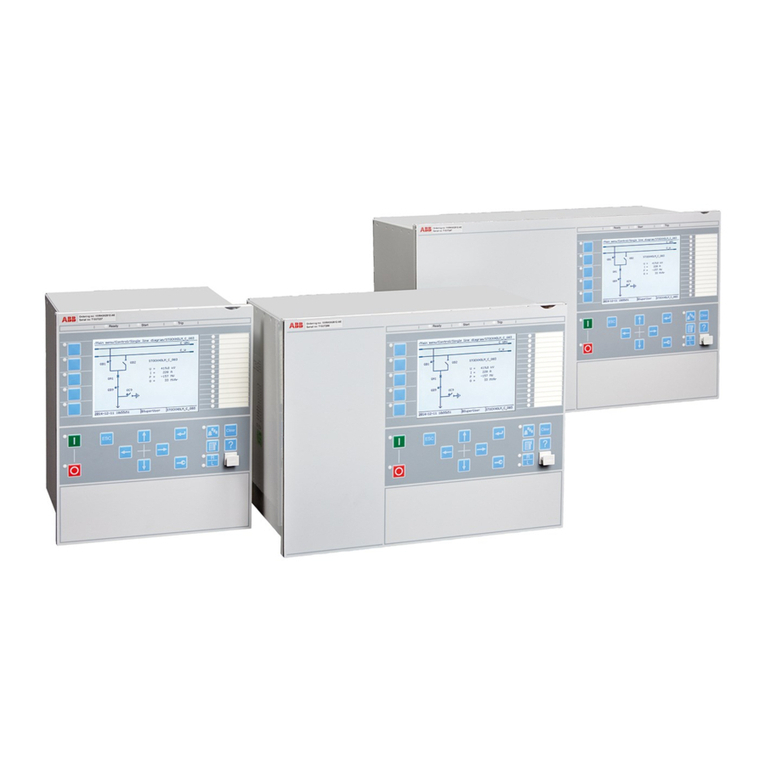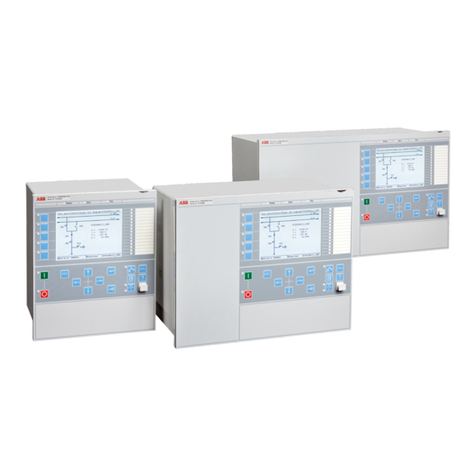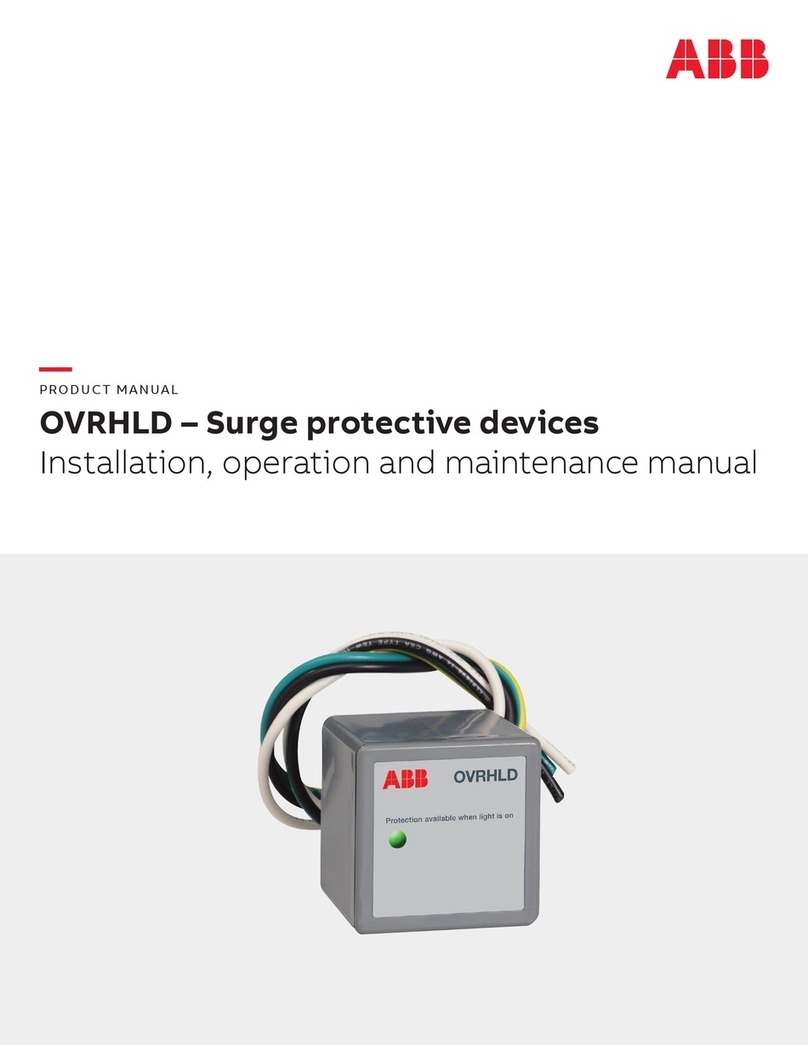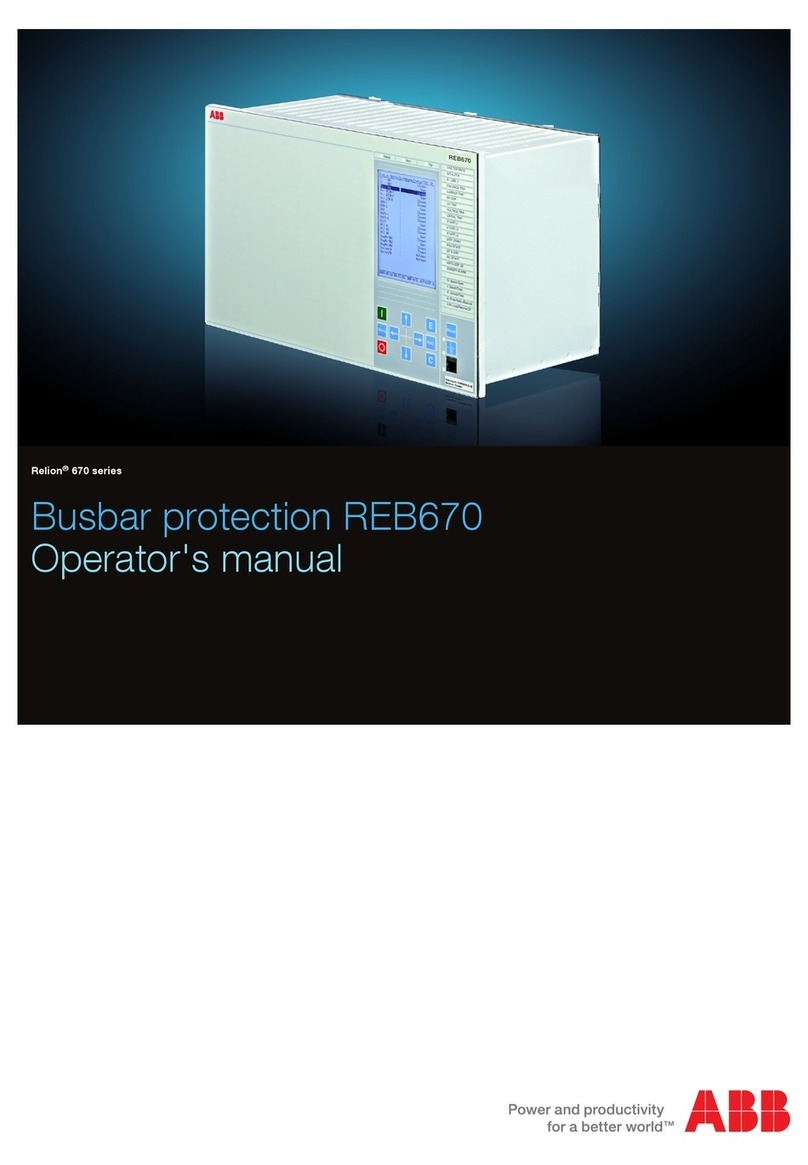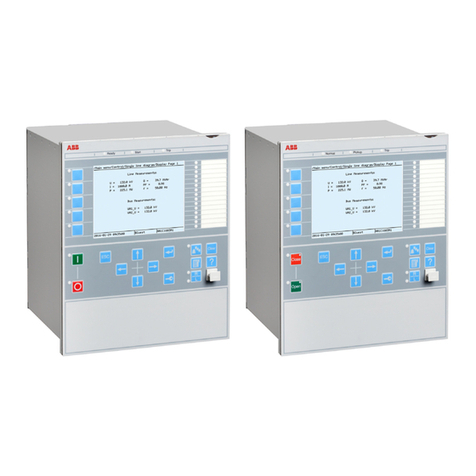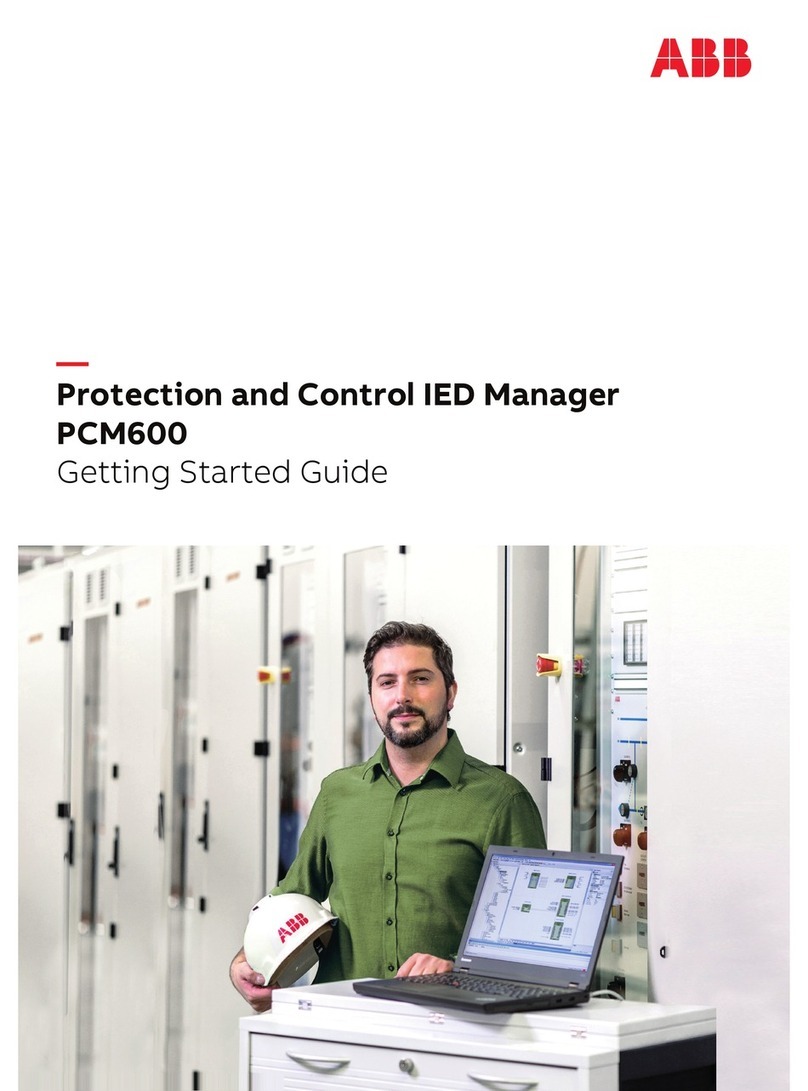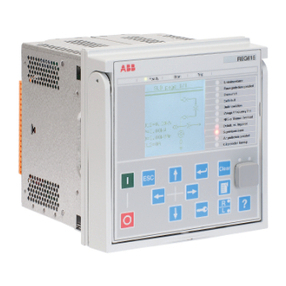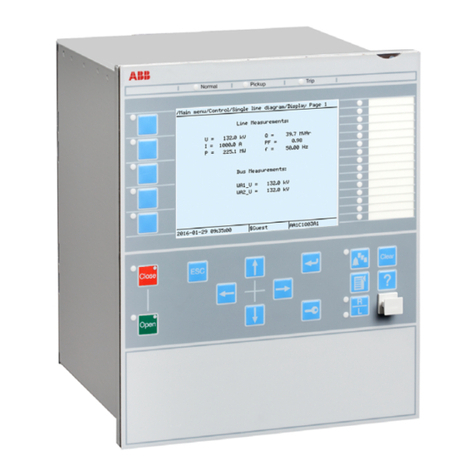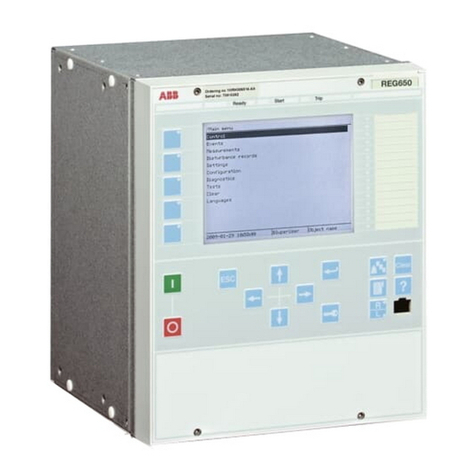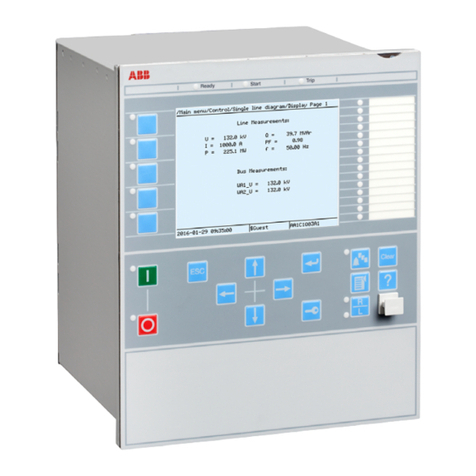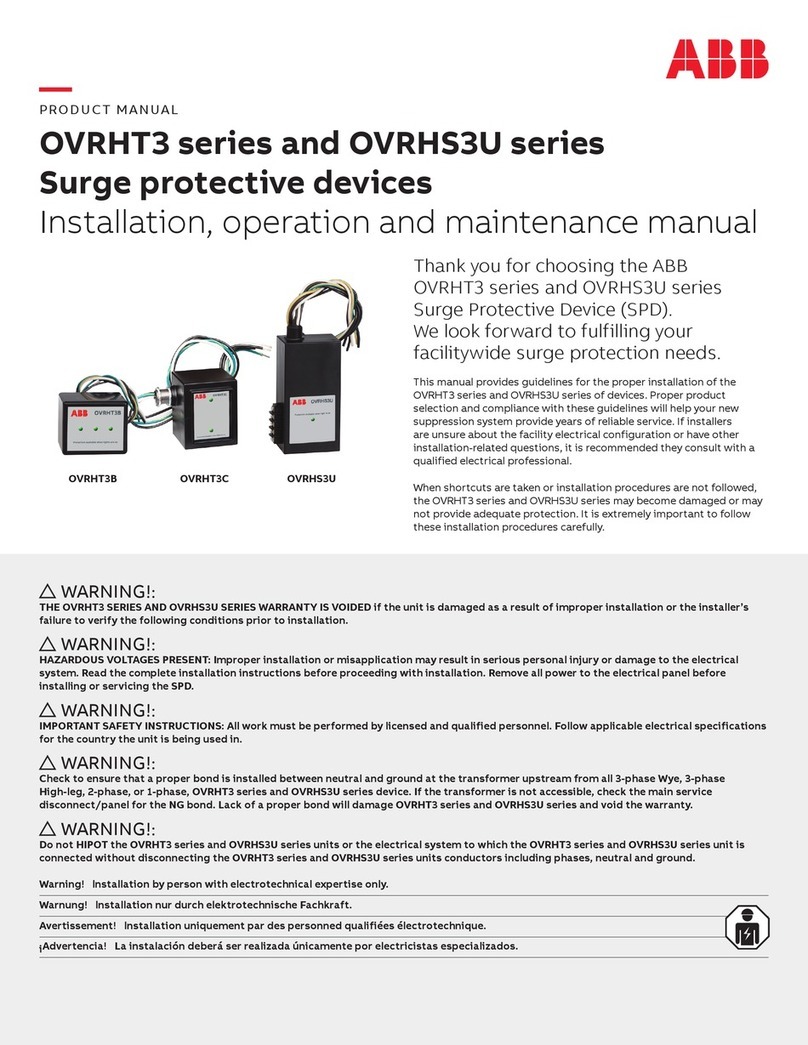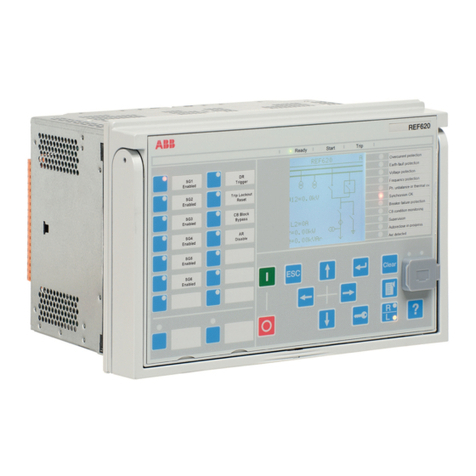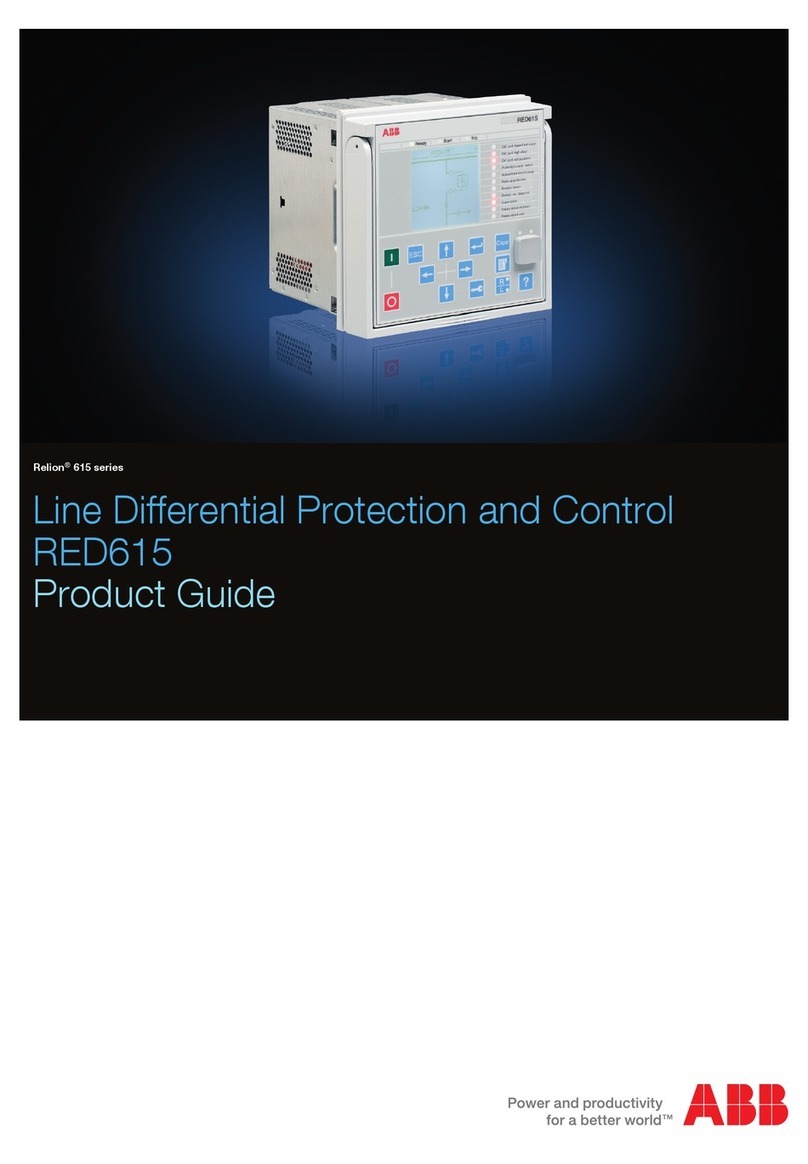
2. Application M13635-3 v9
The Intelligent Electronic Device (IED) is used for the
protection, control and monitoring of overhead lines
and cables in all types of networks. The IED can be used
from distribution up to the highest voltage levels. It is
suitable for the protection of heavily loaded lines and
multi-terminal lines where the requirement for tripping
is one-, two-, and/or three-phase. The IED is also
suitable for protection of cable feeders to generator
block transformers.
The phase segregated current differential protection
provides an excellent sensitivity for high resistive faults
and gives a secure phase selection. The availability of six
stabilized current inputs per phase allows use on multi-
breaker arrangements in three terminal applications or
up to five terminal applications with single breaker
arrangements. The communication between the IEDs
involved in the differential scheme is based on the IEEE
C37.94 standard and can be duplicated for important
installations when required for redundancy reasons.
Charging current compensation allows high sensitivity
also on long overhead lines and cables.
A full scheme distance protection is included to provide
independent protection in parallel with the differential
scheme in case of a communication channel failure for
the differential scheme. The distance protection then
provides protection for the entire line including the
remote end back up capability either in case of a
communications failure or via use of an independent
communication channel to provide a fully redundant
scheme of protection (that is a second main protection
scheme). There are 8 signals (with 64 kbps) and 192
signals (with 2 Mbps) for intertrip and other binary
signals are available in the communication between the
IEDs.
A high impedance differential protection can be used to
protect T-feeders or line reactors.
The auto-reclose for single-, two- and/or three phase
reclosing includes priority circuits for multi-breaker
arrangements. It co-operates with the synchronism
check function with high-speed or delayed reclosing.
High set instantaneous phase and earth overcurrent,
four step directional or un-directional delayed phase
and earth overcurrent, thermal overload and two step
under- and overvoltage functions are examples of the
available functions allowing the user to fulfill any
application requirement.
The IED can also be provided with a full control and
interlocking functionality including co-operation with
the synchronism check function to allow integration of
the main or backup control.
Disturbance recording and fault locator are available to
allow independent post-fault analysis after primary
disturbances. The Disturbance recorder will also show
remote station currents, as received to this IED, time
compensated with measure communication time.
Out of Step function is available to separate power
system sections close to electrical centre at occurring
out of step.
The IED can be used in applications with IEC/UCA
61850-9-2LE process bus with up to eight merging units
(MU) depending on the other functionality included in
the IED. Each MU has eight analog channels, four
currents and four voltages. Conventional and Merging
Unit channels can be mixed freely in the application.
Forcing of binary inputs and outputs is a convenient way
to test wiring in substations as well as testing
configuration logic in the IEDs. Basically it means that all
binary inputs and outputs on the IED I/O modules (BOM,
BIM, IOM & SOM) can be forced to arbitrary values.
Central Account Management is an authentication
infrastructure that offers a secure solution for enforcing
access control to IEDs and other systems within a
substation. This incorporates management of user
accounts, roles and certificates and the distribution of
such, a procedure completely transparent to the user.
Flexible Product Naming allows the customer to use an
IED-vendor independent IEC 61850 model of the IED.
This customer model will be used as the IEC 61850 data
model, but all other aspects of the IED will remain
unchanged (e.g., names on the local HMI and names in
the tools). This offers significant flexibility to adapt the
IED to the customers' system and standard solution.
The logic is prepared with a graphical tool. The
advanced logic capability allows special applications
such as automatic opening of disconnectors in multi-
breaker arrangements, closing of breaker rings, load
transfer logics etc. The graphical configuration tool
ensures simple and fast testing and commissioning.
A loop testing function allows complete testing
including remote end IED when local IED is set in test
mode.
In a differential protection with more than 2 ends one
station can be taken out of service while the other ends
are still protected. During maintenance or power
network modification, some of the line ends may be
taken out of service while other ends are still running. As
the differential protection scheme is the main
protection, it must be kept in service to protect the
remaining part of the line ends that are in service.
Line differential protection RED670
1MRK 505 379-BEN N
4 Hitachi Power Grids
© Copyright 2017 Hitachi Power Grids. All rights reserved
